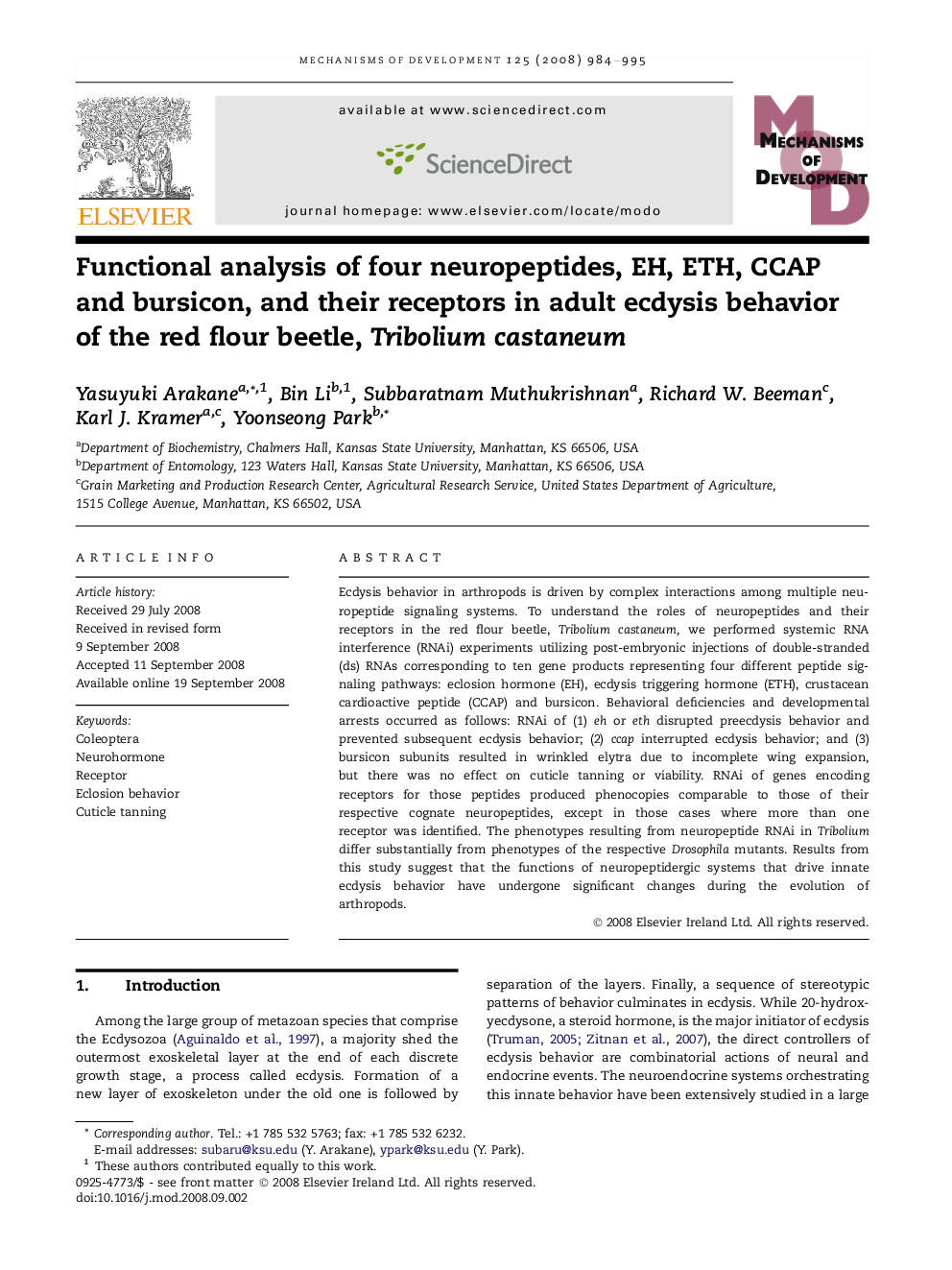| Article ID | Journal | Published Year | Pages | File Type |
|---|---|---|---|---|
| 2195315 | Mechanisms of Development | 2008 | 12 Pages |
Ecdysis behavior in arthropods is driven by complex interactions among multiple neuropeptide signaling systems. To understand the roles of neuropeptides and their receptors in the red flour beetle, Tribolium castaneum, we performed systemic RNA interference (RNAi) experiments utilizing post-embryonic injections of double-stranded (ds) RNAs corresponding to ten gene products representing four different peptide signaling pathways: eclosion hormone (EH), ecdysis triggering hormone (ETH), crustacean cardioactive peptide (CCAP) and bursicon. Behavioral deficiencies and developmental arrests occurred as follows: RNAi of (1) eh or eth disrupted preecdysis behavior and prevented subsequent ecdysis behavior; (2) ccap interrupted ecdysis behavior; and (3) bursicon subunits resulted in wrinkled elytra due to incomplete wing expansion, but there was no effect on cuticle tanning or viability. RNAi of genes encoding receptors for those peptides produced phenocopies comparable to those of their respective cognate neuropeptides, except in those cases where more than one receptor was identified. The phenotypes resulting from neuropeptide RNAi in Tribolium differ substantially from phenotypes of the respective Drosophila mutants. Results from this study suggest that the functions of neuropeptidergic systems that drive innate ecdysis behavior have undergone significant changes during the evolution of arthropods.
